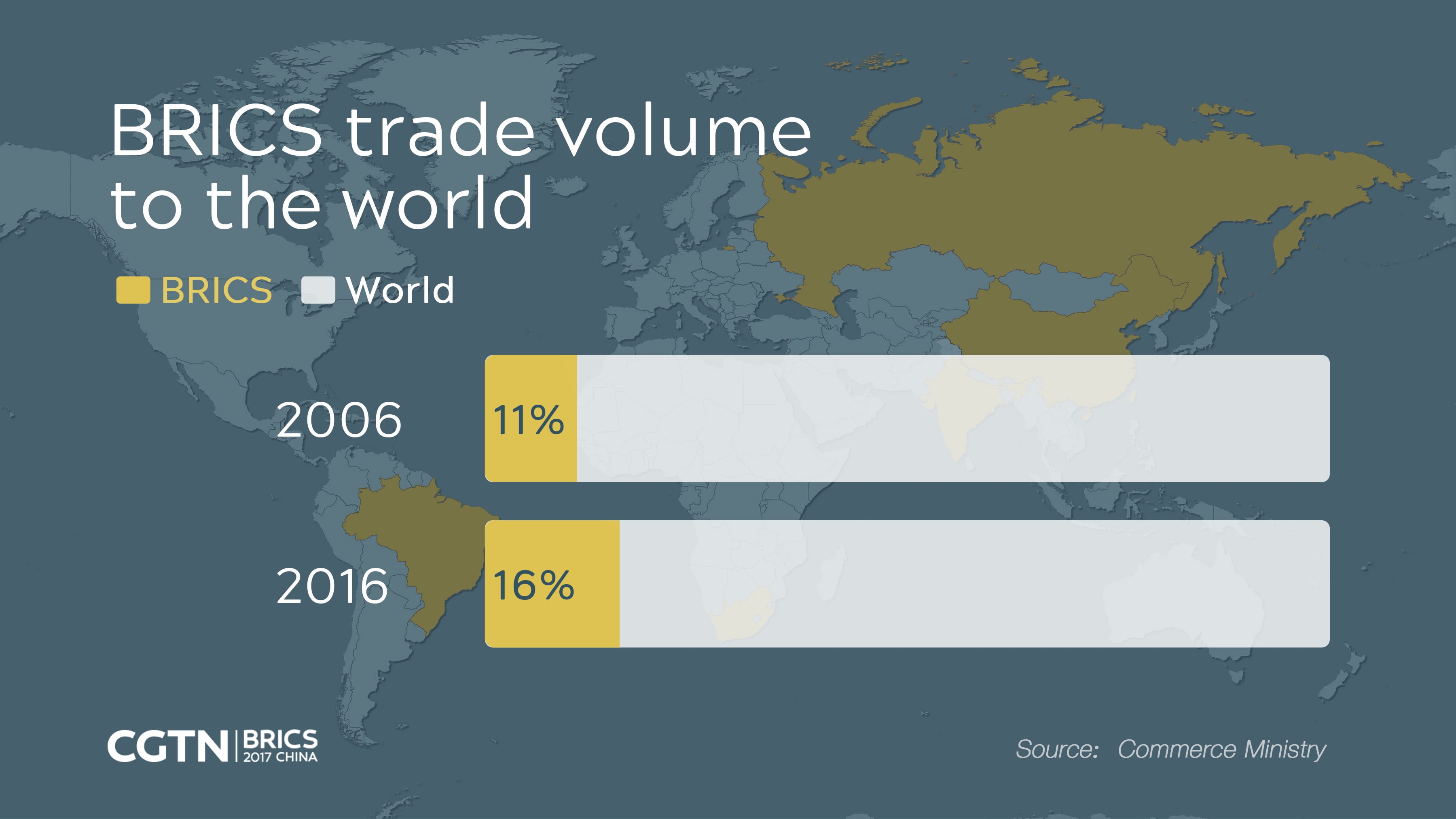
Business
19:44, 31-Aug-2017
BRICS to foster an open world economy
CGTN's Chen Chen

When leaders of BRICS countries meet in Xiamen in southeastern China on September 3-5, one of their objectives will be to ensure that trade with emerging economies continues to expand and does so in an open, free and multilateral manner.

Since it was first launched in 2006, the BRICS partnership has yielded fruitful results. Brazil, Russia, India, China and South Africa made up 23 percent of global gross domestic product last year, up 12 percent from a decade ago. They also contributed 50 percent to world economic growth, according to official BRICS data.
But this comes as protectionism – strongly promoted by US President Donald Trump, among others – has been gaining ground, prompting heated discussions at global economic meetings, including the recent G20 summit.

According to the official BRICS website, one of the priorities of the upcoming summit is thus to "foster an open world economy." The five countries need to "oppose all forms of protectionism and particularism and ensure that all countries enjoy equal rights and opportunities and follow the same set of rules in development."
This was already on the agenda of a BRICS Trade Ministers' Meeting on August 1-2, held in preparation for the leaders’ summit in Xiamen.
"Safeguarding the multilateral trade system and the rise against protectionism serves the common interests of emerging and developing economies,” China’s minister of commerce Zhong Shan said at the meeting.

The 7th Meeting of the BRICS Trade Ministers is held in Shanghai, east China, August 1, 2017. /Xinhua Photo
The 7th Meeting of the BRICS Trade Ministers is held in Shanghai, east China, August 1, 2017. /Xinhua Photo
BRICS countries' share in international trade has grown quickly over the past 10 years, from 11 to 16 percent. From 2006 to 2016, Chinese imports from Brazil almost quadrupled to 45.20 billion US dollars, while those from South Africa more than quintupled to 22.33 billion US dollars. Imports to and exports from Russia also saw a major boost, while exports to India shot up to 57.70 billion US dollars.
Along with making up 23 percent of global GDP, BRICS countries are also responsible for 12 percent of global foreign investment. And they still have much potential.
"Investment and trade are the vital economic drive for BRICS countries," Wang Shouwen, China's vice-minister of commerce, said in July. BRICS countries already look forward to injecting new impetus into world economy, he added.
Now BRICS countries are also experiencing new turning points in their economies.
For more, watch the videos below.
Technology and innovation in Brazil

Turning South Africa into a digital hub for the continent

High-tech expansion in Russia


SITEMAP
Copyright © 2018 CGTN. Beijing ICP prepared NO.16065310-3
Copyright © 2018 CGTN. Beijing ICP prepared NO.16065310-3